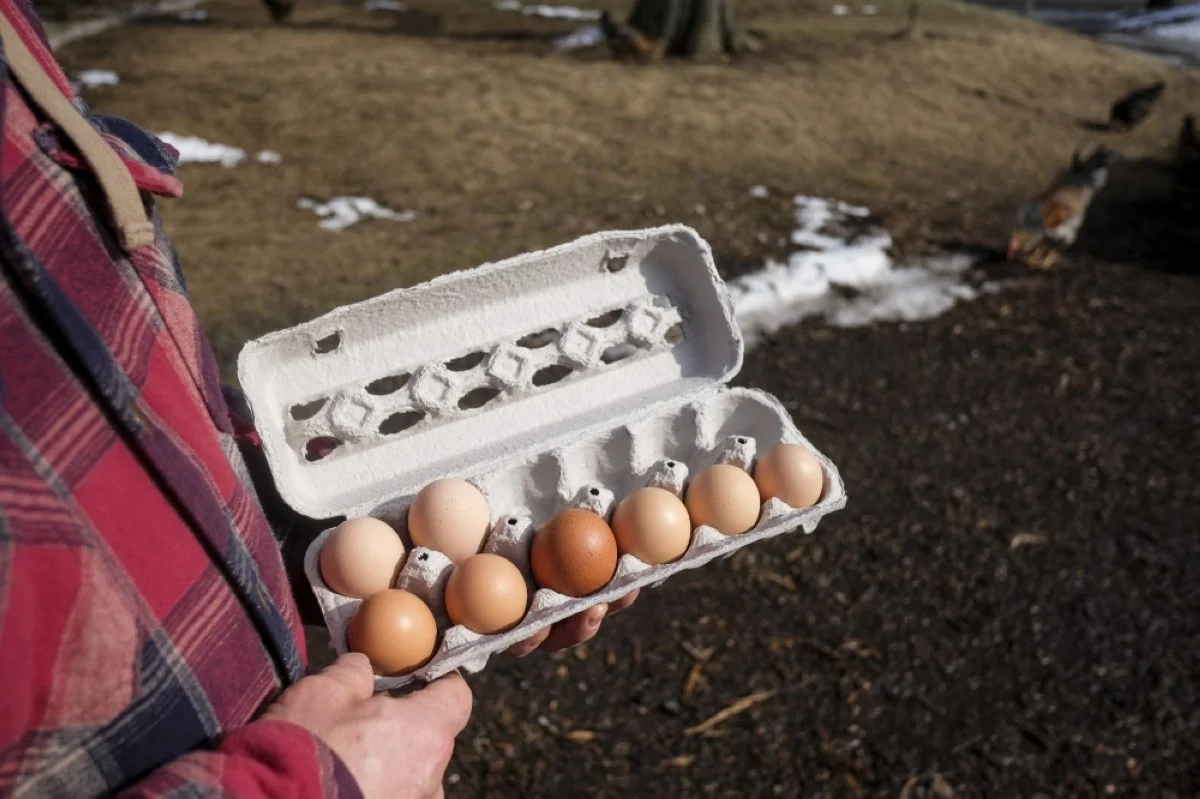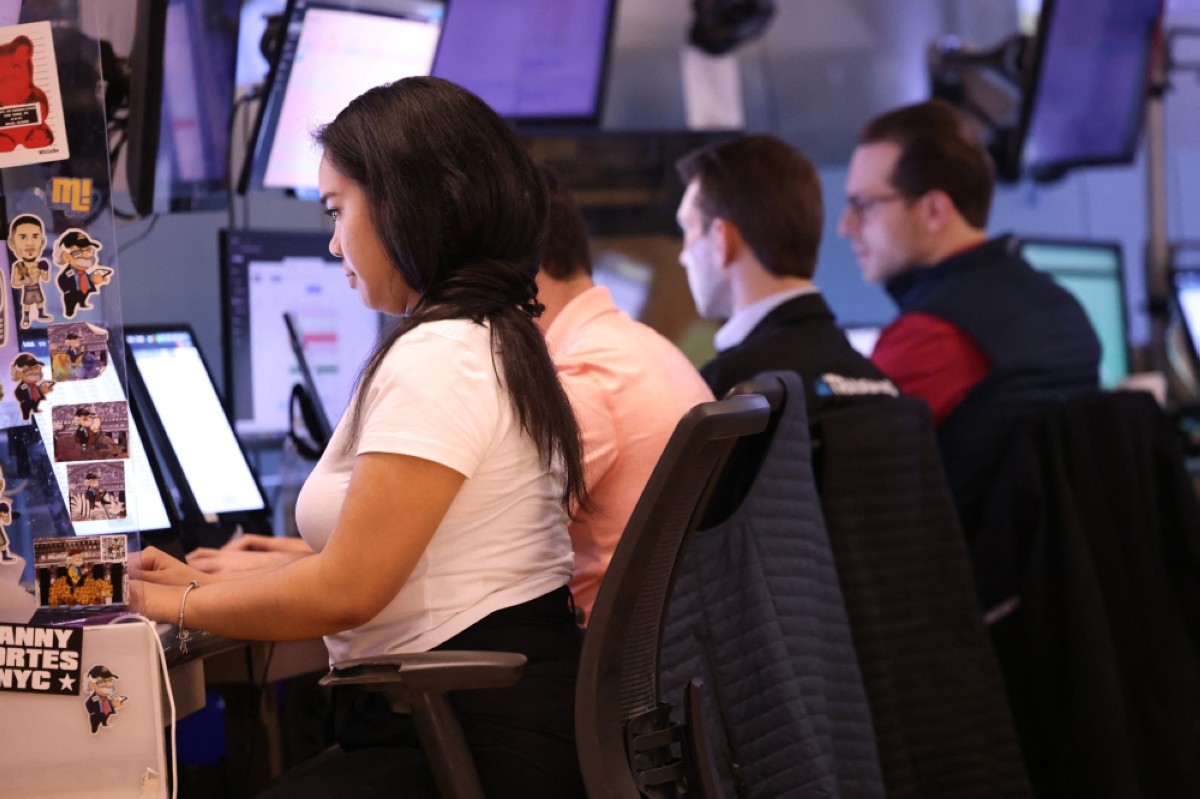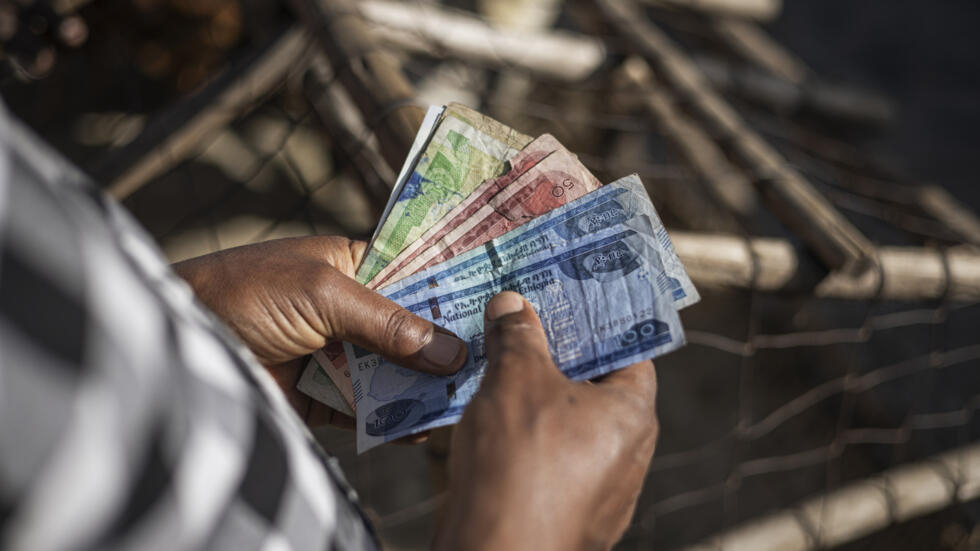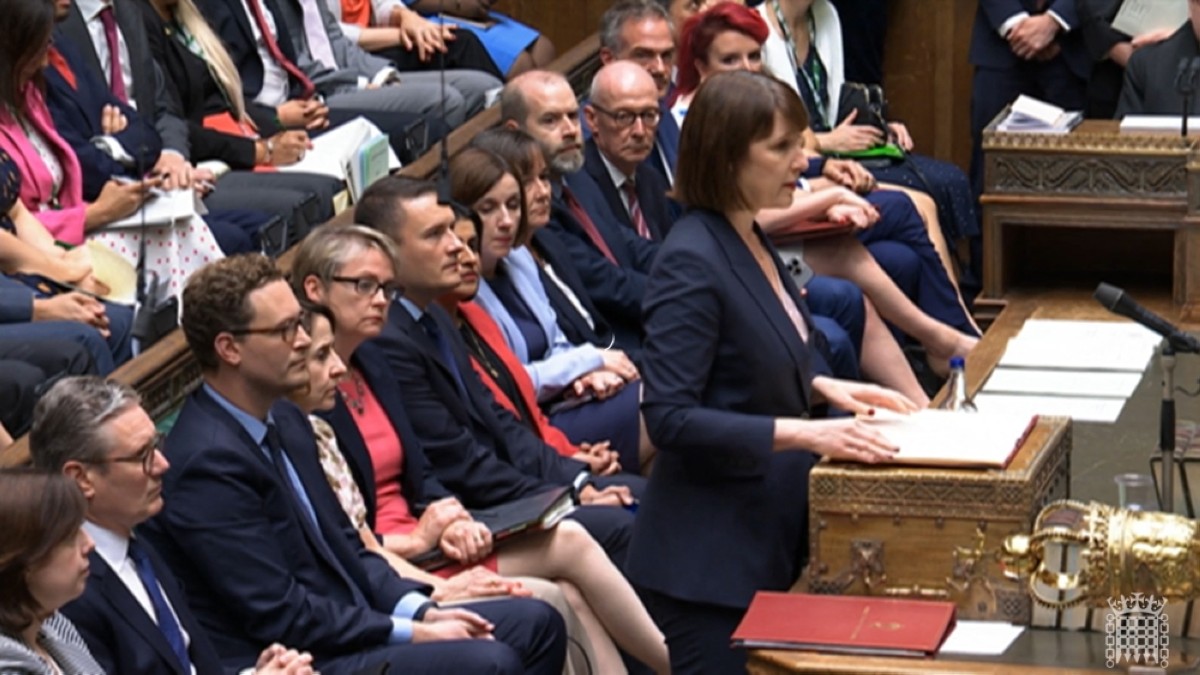Global economy ‘poised for a soft-landing’, says IMF
WASHINGTON: The global economy is “poised for a soft landing,” an IMF spokesperson said Thursday, predicting that inflation around the world will continue to subside without causing a damaging recession.

WILLIAMSTON, United States: Casim Abbas, a mathematics professor at Michigan State University, shows the result of his morning's egg collection at his small egg farm at his home in Williamston, Michigan, on February 8, 2023. --AFP.
Last year proved to be “more resilient than we had expected,” International Monetary Fund spokesperson Julie Kozack told a press briefing in Washington ahead of an upcoming update to the fund’s economic forecasts. The Fund expects that resilience to continue into 2024.
“Our general view on the outlook is we are poised for a soft landing in the global economy,” said Kozack. In October, the IMF predicted that global growth would reach 3.0 percent in 2023 -- a slight upgrade on forecasts earlier in the year—before ticking down slightly to 2.9 percent in 2024.
The IMF’s growth projections are low by historical standards, underscoring the challenges faced by the global economy as it continues its recovery from the COVID-19 pandemic, which wrought economic damage to many countries around the world. One of the challenges facing the Fund is the uneven pace of recovery from the pandemic, Kozack told reporters. “Low income countries in particular are at risk of falling further behind,” she said.
“They are having the hardest time recovering from the series of shocks, including the pandemic, the food and oil price shock,” she continued, adding that the IMF was focused on how to help the “most vulnerable members of our global community.”
Meanwhile, consumer inflation in the United States rose more than anticipated in December, government data showed Thursday, with President Joe Biden conceding he must do more to tackle high prices. The Department of Labor’s consumer price index (CPI), a key measure of inflation, rose 3.4 percent from a year ago, up from November. This underscores the bumpy road to lowering price increases as the presidential election looms in November.
Underlying pressures appear to be ebbing, as a “core” metric that strips out volatile food and energy prices cooled to 3.9 percent in the last month of 2023 -- the lowest since May 2021.
But a rising inflation figure complicates the picture for Biden, who heads into his reelection campaign facing persistent negative perceptions about the economy. “The economy has created more than 14 million jobs since I took office, and wealth, wages, and employment are higher now than under my predecessor,” said Biden in a statement Thursday. “But there is much more work to do to lower costs for American families and American workers.” Analysts do not expect Federal Reserve officials to base their rate-setting off of one month’s data, though accelerating inflation could add pressure on the central bank to hold interest rates at a high level.
The Fed rapidly lifted rates beginning in 2022 and have held them at a 22-year high, seeking to ease demand and sustainably rein in inflation. Despite the CPI uptick in December, inflation has come down significantly from the 9.1 percent peak in June 2022, while consumer spending and the jobs market remained resilient. This has fueled hopes of a so-called “soft landing” for the world’s biggest economy, where inflation cools without a damaging recession.
From November to December, CPI rose 0.3 percent, up from the prior month. “The index for shelter continued to rise in December,” the Labor Department said in its report. The energy index jumped 0.4 percent over the month on increases in electricity and gasoline, while the food index rose 0.2 percent, holding steady.
Describing the inflation battle as two steps forward and one step back, economist Robert Frick of the Navy Federal Credit Union said: “December was a clear step back.” He noted that shelter prices accounted over half the increase, with little relief in sight “as rents prove sticky and homeownership costs rise.” Consumers also “felt the most immediate pain in December from higher food and energy prices, and those are the two commodities Americans are most sensitive to,” Frick said.
As Biden seeks another term in office, he has focused on touting achievements such as the growing economy and low unemployment. But households are still feeling the squeeze of stubborn inflation and his economic agenda, dubbed “Bidenomics,” has not appeared to resonate strongly despite largely encouraging data.
Looking ahead, all eyes are on the Fed, with economist Michael Pearce of Oxford Economics expecting the larger than expected inflation jump “will reverse some of the more aggressive rate cut bets this year.” Although the Fed has signaled that it saw three rate reductions this year, markets are now moderating their expectations of an early start to the reductions. But analysts maintain that the big picture has not changed.
“Core goods prices are flat or falling, rent gains are slowing but remain elevated, and core services inflation is still sticky,” said Ian Shepherdson, chief economist at Pantheon Macroeconomics. He expects the Fed to wait for more data as it mulls the path of rates. “Fed officials will likely look through any upturn in headline CPI inflation, especially if it comes from the more volatile components,” added economist Oren Klachkin of Nationwide. An upturn in core inflation “would get their attention, especially if it continues into January,” he said. — AFP.











